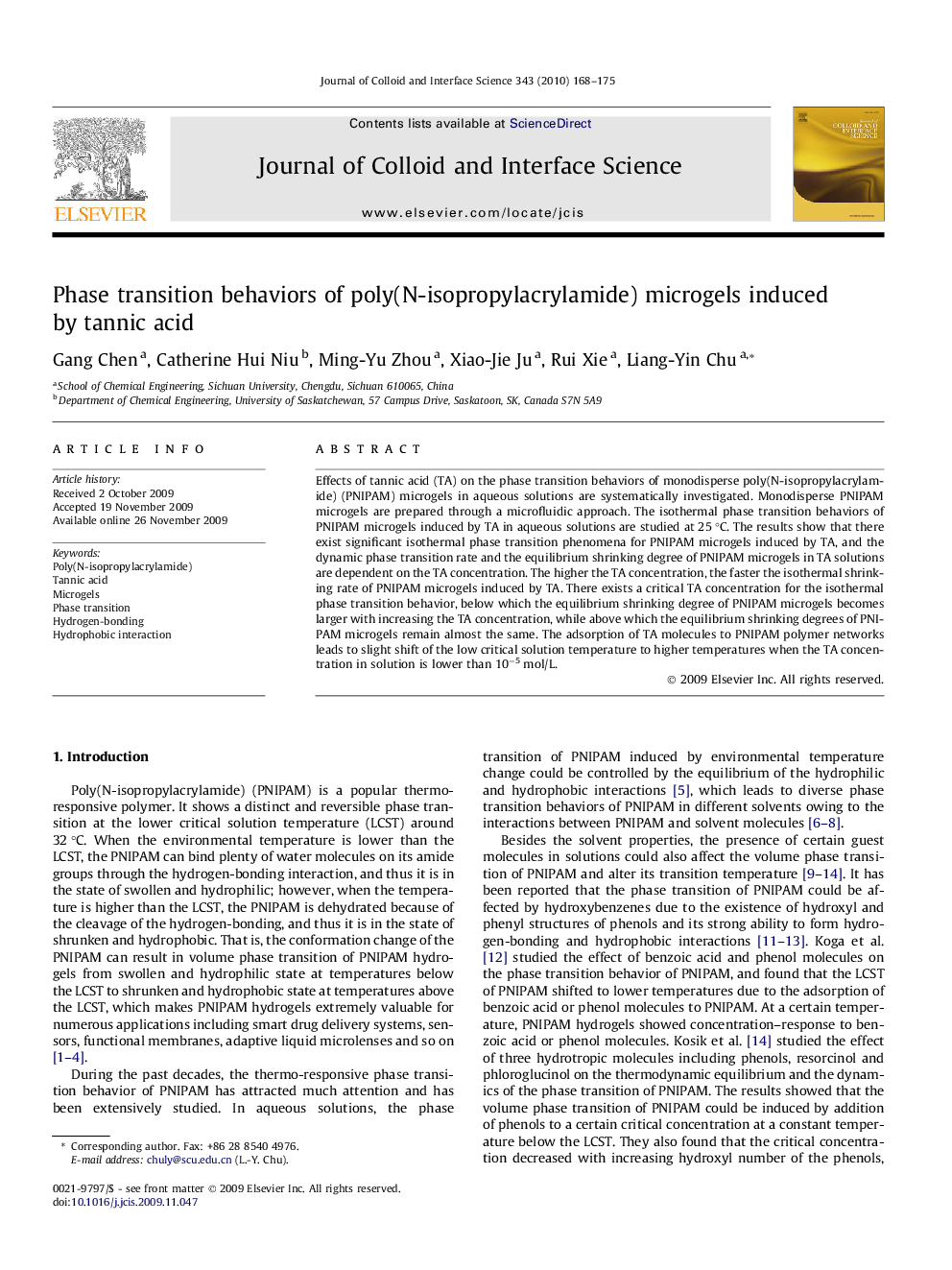| Article ID | Journal | Published Year | Pages | File Type |
|---|---|---|---|---|
| 609424 | Journal of Colloid and Interface Science | 2010 | 8 Pages |
Effects of tannic acid (TA) on the phase transition behaviors of monodisperse poly(N-isopropylacrylamide) (PNIPAM) microgels in aqueous solutions are systematically investigated. Monodisperse PNIPAM microgels are prepared through a microfluidic approach. The isothermal phase transition behaviors of PNIPAM microgels induced by TA in aqueous solutions are studied at 25 °C. The results show that there exist significant isothermal phase transition phenomena for PNIPAM microgels induced by TA, and the dynamic phase transition rate and the equilibrium shrinking degree of PNIPAM microgels in TA solutions are dependent on the TA concentration. The higher the TA concentration, the faster the isothermal shrinking rate of PNIPAM microgels induced by TA. There exists a critical TA concentration for the isothermal phase transition behavior, below which the equilibrium shrinking degree of PNIPAM microgels becomes larger with increasing the TA concentration, while above which the equilibrium shrinking degrees of PNIPAM microgels remain almost the same. The adsorption of TA molecules to PNIPAM polymer networks leads to slight shift of the low critical solution temperature to higher temperatures when the TA concentration in solution is lower than 10−5 mol/L.
Graphical abstractIsothermal phase transitions of poly(N-isopropylacrylamide) microgels are induced by tannic acid molecules in aqueous solutions at 25 °C (below the lower critical solution temperature).Figure optionsDownload full-size imageDownload high-quality image (36 K)Download as PowerPoint slide
